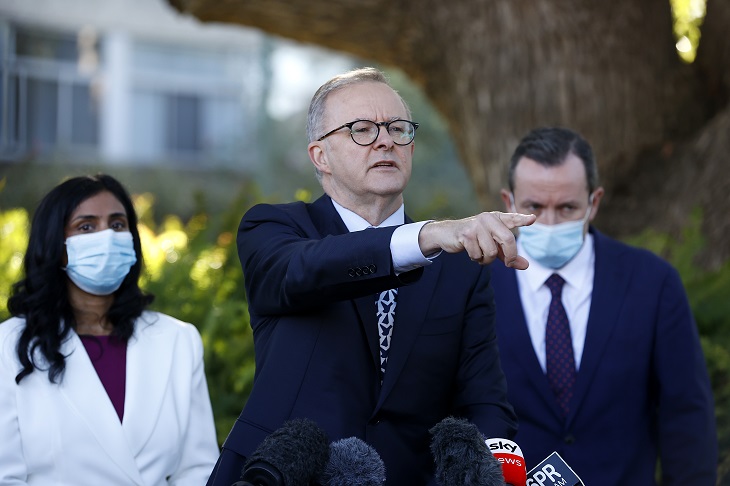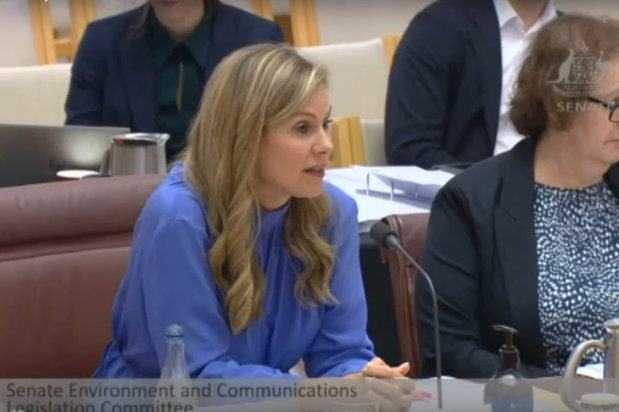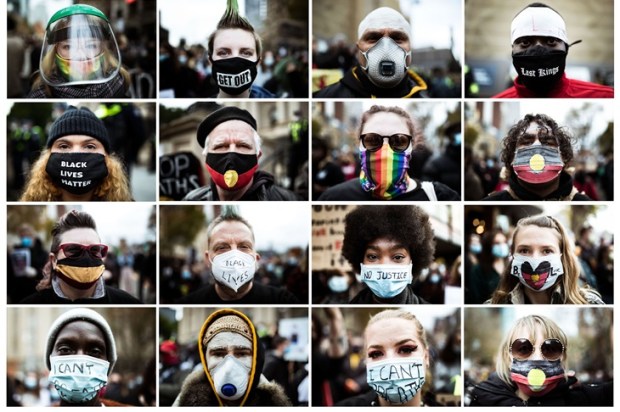Sensational headlines about ambulance ramping have become a regular event, with the usual finger-pointing of state versus federal responsibility made more vehement by the recent election.
As the Covid pandemic declines, we are now threatened by more sensational reporting of exotic diseases such as Japanese encephalitis and MonkeyPox. Of far greater importance is the anticipated reappearance of the annual flu. Social distancing and masks have curtailed the spread of many viruses over the last two years, and perhaps allowed our immune systems to weaken.
A good-going flu epidemic is building. By early May, there have been 11,000 cases which is already more than the annual average, especailly when compared with 250 in 2021. We will again hear stories of inadequate medical facilities, and ambulances queued outside emergency departments.
The deterioration of service capacity has long preceded the Covid pandemic. In South Australia it became a cause célèbre, with unnecessary deaths leading to strikes which contributed to a change of government. In Melbourne on May 11, a code orange was notified with 39 ambulances ramped, leaving 70 calls awaiting emergency treatment; a code red was issued in March when only 5 per cent of its fleet was available. A recent report on the ambulance system in Victoria has revealed 12 deaths were caused by delays. Ramping in Queensland increased to 46 per cent by the end of 2021. There has been a steady increase in hospital ramping in Western Australia, which was well before the Covid pandemic; and the usual winter peaks have seen a doubling of numbers.
State by state comparisons show times are blowing out everywhere. The target time of 30 minutes to transfer from ambulance to emergency in 2020-21 was achieved in only 54 per cent of the time in SA, 62 per cent in ACT, 63 per cent in WA, 65 per cent in QLD, 72 per cent in Victoria, 80 per cent in TAS and 85 per cent in NSW. In my own state of Queensland, the 90 per cent 30-minute target has not been met for 7 years.
The solution is not as simple as acquiring more ambulances. There are other factors involved, including health funding, the emergency answering service, increased use of emergency departments, medical and nursing staff numbers, Covid related effects, availability of emergency department or hospital beds, alternative after hours GP cover, increasing psychiatric and drug problems, and bed-block by the elderly.
The World Health Organisation recommends an ambulance for every 100,000 population, and more in country locations. There are 21,000 paramedics employed to deal with an estimated 7,600 calls and over 6,000 transfers daily in 2019-20. Total ambulance numbers are difficult to obtain; SA has 380, NSW 1,000, and more money is now being allocated in SA and WA.
The misuse of ambulances is a starting point for improvement. The UK has introduced a system whereby the triple-0 call is graded and, according to its severity, the urgency of retrieval assessed. This requires some medical knowledge, but makes better use of the ambulances available. Studies from the UK have shown that around 10 per cent of calls are life-threatening, 40 per cent are emergency, 35 per cent are urgent, and 10 per cent non-urgent. Using this classification, a different time deadline could prioritise the use of ambulance time when availability is limited. A recent Victorian report found the system to be ‘risk averse’, meaning all cases received the same priority.
Per capita medical expenditure has risen by 5 per cent per annum in real terms, from US$1,600 in 1995, to $5,000 in 2020; comparative figures are $5 to $6,000 in Europe. Health spending, as a proportion of GDP, has progressively increased from 6.5 per cent in 1989-90, 8.4 per cent in 2001-2002, to 9.5 per cent in 2011-12, but has now stabilised. There is significant interstate variation, averaging $2,971 per head in 2019-20, the lowest is in VIC at $2,687 and the highest in WA at $3316. The total healthcare bill for 2022-23 is $132 billion. This has doubled in 10 years, with the Federal Medicare contribution increasing by $7 billion to $31 billion.
Attempts have been made to control costs by using business management systems. The bureaucratic solution seems to employ more managers to ‘streamline the system’; the usual end result of these reorganisations is more bureaucrats and fewer beds.
Currently, there are around 750 public hospitals with about 60,000 beds, in private there are around 600 hospitals with about 32,000 beds. Despite rising population numbers, the number of beds has barely improved, from 3.75 per 1,000 in 2012 to 3.9 by 2017, but is still low (the OECD average is 4.7). ICU bed numbers also compare poorly with, in 2020, 2,200 available beds, a ratio of 9 beds per 100,000,
With no benchmark for an efficient service, there is a wide inter-state variation in the beds-to-bureaucrat ratio, but all are worsening. In 2014 WA had the best ratio of 6.8, QLD fell as low as 1.9 before a change of government in 2012 produced redundancies and it improved to 3, NSW had deteriorated to 4.4, and the national figure was then 3.4 bureaucrats per bed.
Recent studies and my personal experience confirmed our health system was already struggling to cope with demand before the pandemic; lengthy waits for elective surgery and overloaded emergency departments were the obvious pre-Covid signs of the underlying problem. Unsurprisingly, the latest figures show that surgical waiting times have deteriorated further since Covid. Those waiting for a year or more increased from 2.8 per cent in 2019-20, to 7.6 per cent in 2020-21; the average waiting time of 50 per cent on the list had blown out from 39 days to 48 days over the same period.
The increased number awaiting elective treatment has resulted in increased emergency attendance, with complications arising from delayed treatment. The Covid pandemic has also caused delayed diagnosis of new surgical and non-surgical chronic conditions, adding to emergency presentations. The Australian emergency department presentations have increased from 310 to 329 per thousand in the 5 years to 2018-19, by 2020-21 another 6 per cent had been added, to 350 per thousand.
In line with increase in population numbers there has been a steady increase in doctor numbers. In 2014 there were 91,000 registered doctors, a rate of 3.5 practising doctors per 1,000 of population, compared with 2.6 per 1,000 in 2003; the latest ratio is 3.8 per 1,000. This compares favourably with figures of 3.5 in New Zealand, and 2.8 in the US; doctor distribution is a problem, with oversupply in the cities and under-supply in the country.
Hospital emergency departments see 20,000 patients per day; many private hospitals have closed their emergency services as they do not make money. Many patients should be visiting their own GPs, but provision of after-hours cover has fallen away; alternative cover may be provided by after-hours services and phone consultation. Some hospitals provide a GP service in their emergency departments, although this allows emergency staff to deal with true emergencies, as opposed to trivial complaints, it adds to the congestion of these departments. The Labor party has suggested establishing emergency after-hours GP clinics, a policy previously tried before with little success.
In 2001 there were 191,000 nurses; increasing by more than a third to 257,000 in 2011 and around 300,000 by 2014, currently 400,000. Despite these increases there is predicted to be a significant shortfall by 2030 because of an ageing workforce (40 per cent are over 50) and inadequate numbers in training. As the shortages increase the workplace demands result in an early drop-out rate (around 50,000 nurses are registered but not working as nurses). The shortfall will be particularly acute for enrolled nurses as demand in aged care facilities increases rapidly, currently their numbers are falling. A new Labor plan to have resident registered nurses present at all times is unachievable, with the number of over 65s increasing, from 3.7 million in 2014 (15 per cent of the population) to 6.8 million by 2040 (20 per cent of the prospective population).
Inadequate hospital bed numbers provide the final block to the system, as long as 30 years ago, my hospital regularly operating at 110 per cent bed occupancy. Victoria, has had the worst stats with, in 2019-20, 2.3 public beds per 1000, NSW had 2.6, the Australian average was 2.5. The cost-effective options of more day surgery and earlier discharge, for bed vacation, have already been made. Beds continue to be blocked by the lack of residential accommodation for the elderly, a problem steadily worsening.
As the Covid pandemic has wound down we are left with the legacy issues of, surgery backlogs, currently compounded by unnecessary vaccine mandates and isolation requirements of nursing and medical staff; a recent study suggested 2,500 hospital employees were off work because of Covid, or being a close contact. These staffing problems add to delays in both emergency and in-patient bed availability; as a result, the average time for treatment in emergency has increased from 7 to 8 hours, taking 13 hours for those subsequently admitted, up from 11 hours 5 years before.
Ultimately in health care, as with all other government programs, we have to look at what we can afford rather than what we would like, entitlement and expectation have to face a budget reality. There are areas of saving and efficiency, but too many new approaches (like NDIS, ‘My Health’ GP emergency clinics, and nurses in aged care facilities) are introduced without consideration of the long-term cost implications. These are matters which need to be discussed with a bipartisan approach, dictated as much by medical as political imperatives.
We can do nothing about an ageing population, the medical and surgical backlog will resolve with time; we must hope we do not have a severe flu season to add to the Covid hangover. The main ramping hold-up is due to a long-term shortage of hospital beds and elderly residential accommodation; short-term, perhaps prioritising calls as in UK, a charge for those inappropriately using ambulance and emergency, or simply referring them elsewhere, would reduce congestion?
What is not likely to improve the situation is ambo’s striking. Although the problem is country-wide, it is interesting to note that it is only in NSW, a coalition state, and in SA when it was a coalition state, that strike action has been taken. Perhaps their Union has different motives.
Dr Graham Pinn is a retired consultant physician and tropical medicine specialist, with 50 years medical experience; he has worked in public hospitals in many countries and in most Australian States.
Got something to add? Join the discussion and comment below.
Get 10 issues for just $10
Subscribe to The Spectator Australia today for the next 10 magazine issues, plus full online access, for just $10.


























Comments
Don't miss out
Join the conversation with other Spectator Australia readers. Subscribe to leave a comment.
SUBSCRIBEAlready a subscriber? Log in